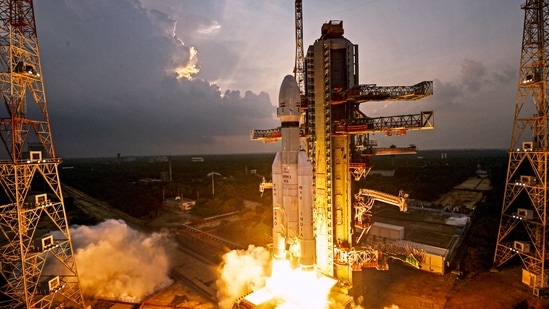
In a significant milestone for India’s space endeavors, the naval CMS-03 satellite, the heaviest ever launched from Indian soil, was successfully sent into orbit aboard the new-generation LVM3-M5 ‘Bahubali’ rocket on Sunday. The launch took place from the Satish Dhawan Space Centre in Sriharikota, Andhra Pradesh, marking a pivotal achievement for the Indian Space Research Organisation (ISRO).
Shortly after the launch, ISRO released a video showcasing the successful lift-off and on-board camera views. The footage captured the moment the 4,410 kg communication satellite was propelled into space, highlighting the separation of the two S200 solid rocket boosters and the L110 liquid core stage, ensuring the mission’s success.
The Significance of CMS-03
The CMS-03 satellite is a multi-band communication satellite designed to provide services across a vast oceanic region, including the Indian landmass. According to ISRO Chairman V Narayanan, the satellite was “precisely injected” into the Geosynchronous Transfer Orbit (GTO), and it is expected to offer communication services for at least 15 years.
In his address from the Mission Control Center, Narayanan emphasized the satellite’s role as “yet another shining example of Atmanirbhar Bharat” (self-reliant India), underscoring the nation’s growing capabilities in space technology.
LVM3-M5: The ‘Bahubali’ Rocket
The LVM3-M5 rocket, dubbed ‘Bahubali’ by ISRO Chairman Narayanan, is recognized for its heavy-lifting capabilities. This launch vehicle has been instrumental in previous missions, including the prestigious Chandrayaan-3 mission in 2023. The LVM3 has a track record of success, with eight launches to date, all achieving their objectives.
The S200 boosters, critical for providing the necessary thrust at lift-off, are mounted on either side of the rocket. Meanwhile, the L110 Liquid Stage, powered by two Vikas engines, plays a crucial role in the rocket’s performance, as noted by news agency PTI.
Historical Context and Future Implications
The launch of CMS-03 represents a significant step forward for India’s space program, building on the success of previous missions. The LVM3’s consistent performance underscores ISRO’s growing expertise and reliability in satellite launches, positioning India as a formidable player in the global space arena.
Experts suggest that the successful deployment of CMS-03 will enhance India’s communication infrastructure, providing robust services across a wide geographical area. This development aligns with India’s broader ambitions to expand its capabilities in space technology and satellite communications.
“The 4410 kg satellite is precisely injected,” stated ISRO Chairman V Narayanan, highlighting the precision and expertise involved in the mission.
Looking ahead, ISRO is likely to continue leveraging the LVM3 platform for future missions, potentially expanding its scope to include more complex and ambitious projects. The success of CMS-03 not only reinforces India’s technological prowess but also paves the way for further advancements in space exploration and satellite technology.
As ISRO continues to push the boundaries of what is possible, the successful launch of CMS-03 serves as a testament to India’s commitment to innovation and self-reliance in the field of space exploration.






